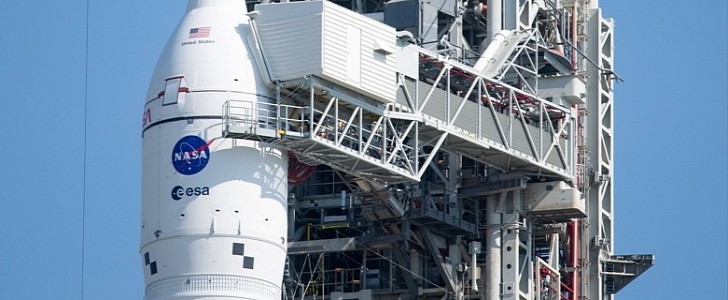On August 29, the Orion spacecraft will launch atop NASA's massive Space Launch System (SLS) rocket, kickstarting the Artemis Moon program. This flight will mark the beginning of a series of several intricate missions aimed at returning astronauts to the lunar surface.
Five decades have passed since humans walked on the Moon. With Artemis, NASA will be back, and this time, it plans to stay. Artemis I is just the first flight of the agency's SLS mega rocket and the Orion spacecraft. The rocket will blast off from Launch Pad 39B at the Kennedy Space Center in Florida with the uncrewed capsule on top, sending it on a 42-day journey around the Moon.
It's a critical test flight that will pave the way for future crewed missions. Although Orion will not carry any humans onboard, it will not go into space empty. The capsule will be loaded with precious items, including one astronaut dummy and two mannequins that will be used as zero-G indicators. Not only that, but it will also take various flags, mementos, microchips, and many other intriguing things.
Earlier this week, NASA concluded its Flight Readiness Review (FRR) for Artemis I. Everything seems to go as planned for the big launch. Currently, the agency is conducting the preparations for the uncrewed flight at Pad 39B. On Wednesday (August 24), Orion's hatches were opened one last time ahead of the launch. The teams were busy preparing the interior for the flight. They thoroughly inspected the windows, checked for leaks, and removed interior access platforms.
If the skies are clear, on Monday morning, the SLS will take off with Orion on top, setting the spacecraft on its way to the Moon. Orion will go farther than any other human-rated spacecraft has ever traveled, reaching 290,000 miles (467,000 km) away from Earth at its furthest point. It will spend several weeks orbiting the satellite, and then it will return home with a splashdown in the Pacific Ocean.
If the weather is not favorable on August 29, the Artemis I mission can also be launched on September 2 and September 5.
It's a critical test flight that will pave the way for future crewed missions. Although Orion will not carry any humans onboard, it will not go into space empty. The capsule will be loaded with precious items, including one astronaut dummy and two mannequins that will be used as zero-G indicators. Not only that, but it will also take various flags, mementos, microchips, and many other intriguing things.
Earlier this week, NASA concluded its Flight Readiness Review (FRR) for Artemis I. Everything seems to go as planned for the big launch. Currently, the agency is conducting the preparations for the uncrewed flight at Pad 39B. On Wednesday (August 24), Orion's hatches were opened one last time ahead of the launch. The teams were busy preparing the interior for the flight. They thoroughly inspected the windows, checked for leaks, and removed interior access platforms.
If the skies are clear, on Monday morning, the SLS will take off with Orion on top, setting the spacecraft on its way to the Moon. Orion will go farther than any other human-rated spacecraft has ever traveled, reaching 290,000 miles (467,000 km) away from Earth at its furthest point. It will spend several weeks orbiting the satellite, and then it will return home with a splashdown in the Pacific Ocean.
If the weather is not favorable on August 29, the Artemis I mission can also be launched on September 2 and September 5.
Final closeouts continue at Pad 39B. Teams opened @NASA_Orion hatches for the last time before the Artemis I launch to complete payload positioning and prepare the interior for flight. Ops include interior window inspections, leak checks, and removing interior access platforms. pic.twitter.com/A1DLEMd6GD
— NASA's Exploration Ground Systems (@NASAGroundSys) August 24, 2022







